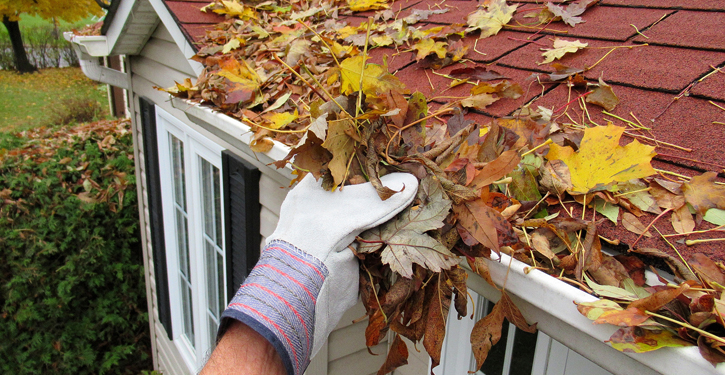A properly maintained roof can last decades before needing to be replaced, but it can deteriorate fast without proper maintenance. While many homeowner policies cover a roof replacement if the damage is sudden or caused by an act of nature, damage from wear and tear and poor maintenance is usually not covered, so policyholders should take steps to inspect and maintain their roofs throughout the year.
Watch for weather early in the year
For many parts of the country, the start of the year can mean extreme weather, such as heavy snow, increased rainfall, and cooler temperatures. If you are hit with a big snowstorm or blizzard, carefully remove some of the heavy snow off your roof to prevent structural damage. When possible, trim any tree branches that may become heavy with snow or fall onto your roof during strong winds and rain. As winter wanes, be sure to check gutters to be sure they’re clear and working properly as an effective drainage system for melting snow and ice or heavy rainfall.
Spring cleaning
In the spring, it’s essential to do a visual, from-the-ground inspection of your roof. Be sure to check for lifting or missing shingles, damaged drip edges, missing or exposed fasteners, and sagging or broken gutters. Don’t neglect to notice any buckling, loose, or missing flashing as well. If you do see any problems, be sure to have repairs done. It’s also a good idea to keep records of any repairs, expert inspections, and any before and after photos, so you can easily share these updates with your insurance agent.
Clean the gutters
Throughout the year, it’s crucial to keep gutters free of debris. Water from a backed-up gutter can damage your roof and rot the fascia, so you’ll want to be sure your gutters are draining properly all year long. You might even consider calling in an expert to clean your gutters a few times a year, especially if you’re anticipating a lot of precipitation.
Watch for branches, moss, and algae
All year long, but especially in the warmer months, it’s important to watch out for overhanging tree limbs that can fall and damage your roof. Trimming overhanging branches can also prevent the growth of algae and moss, and be sure to remove debris and keep your attic properly ventilated to keep moss and algae from growing on your roof.
Consult an expert
As the weather begins to cool again later in the year, it’s essential to perform another visual, from-the-ground inspection of your roof. This is also an excellent time to check the caulking and ensure flashings are holding their seal. If you aren’t sure or suspect the caulking may need a refresh, call in an expert.
Wrap up the year on the right note
As homeowners in some parts of the country begin to think about the return of snow or heavy rainfall, they must ensure their roof is ready for the weather. If you live in a colder climate, have the insulation and ventilation in your attic checked to prevent ice dams from forming on your roof. Be sure to check that gutters are working correctly to reduce moisture buildup.
Roof-related worries? Westwood can helpTaking steps to keep your roof well-maintained is a vital part of homeownership. Still, it’s also important to talk to your insurance agent about any changes to your roof and evaluate your policy’s coverage. At Westwood, we can help you understand how your homeowners policy will protect your roof, and we can help you find the best rates and coverage for your unique circumstances. Contact us today to learn more, or get a quick quote right now.





